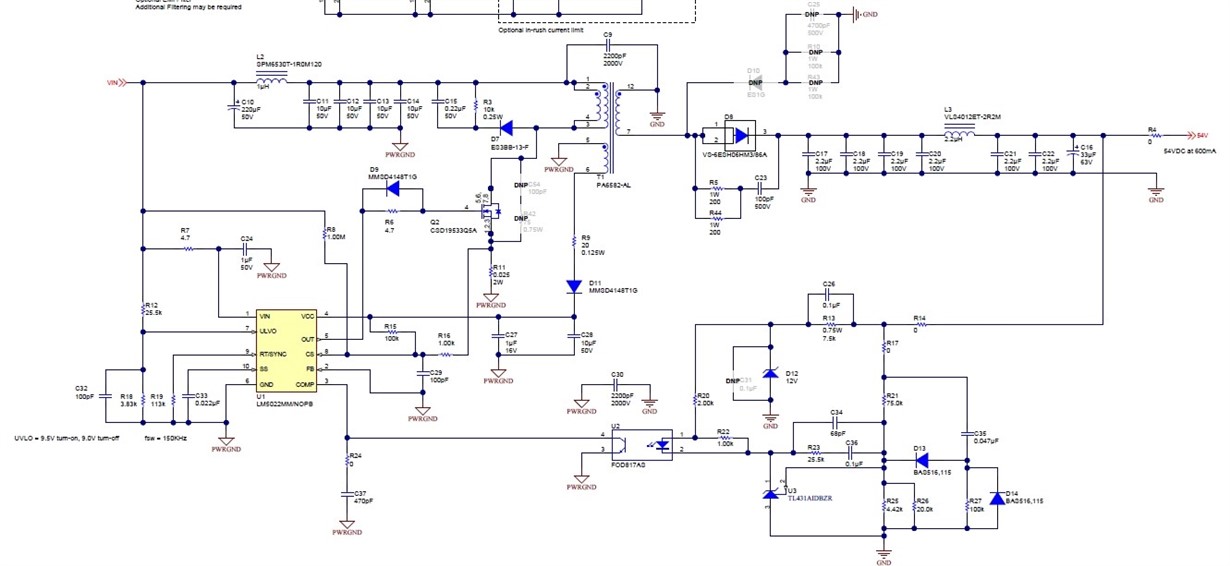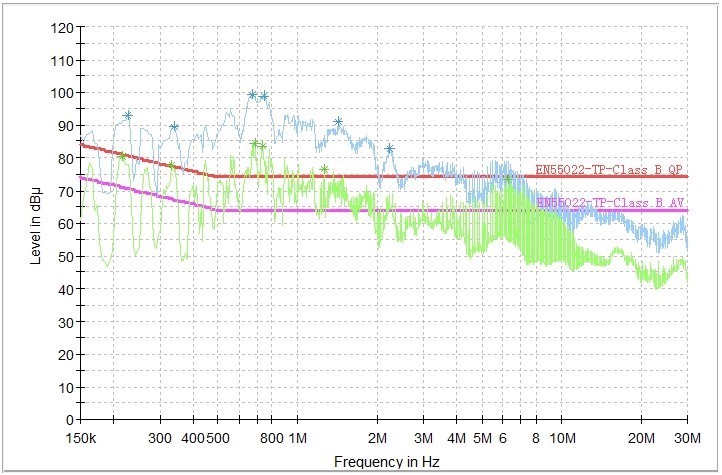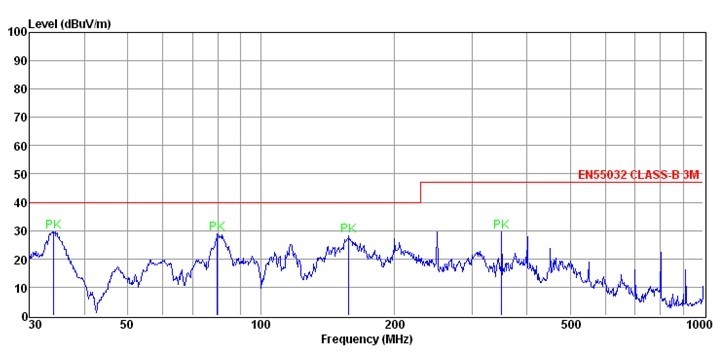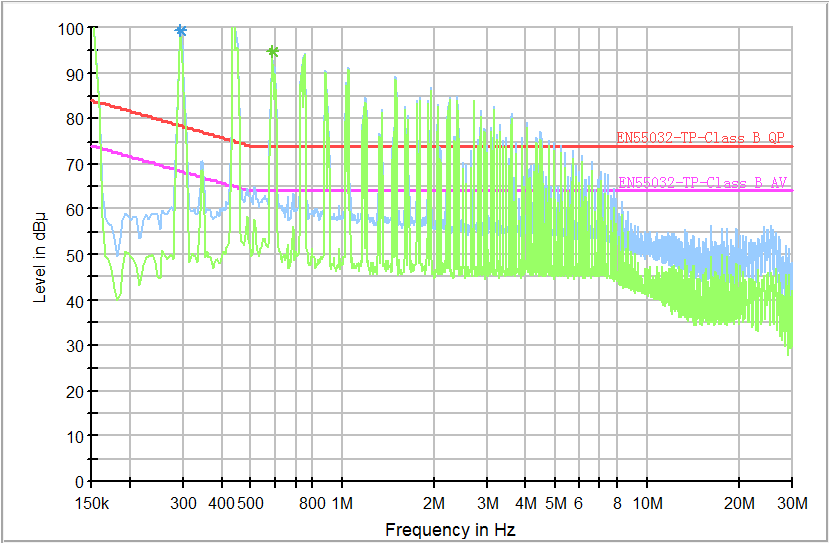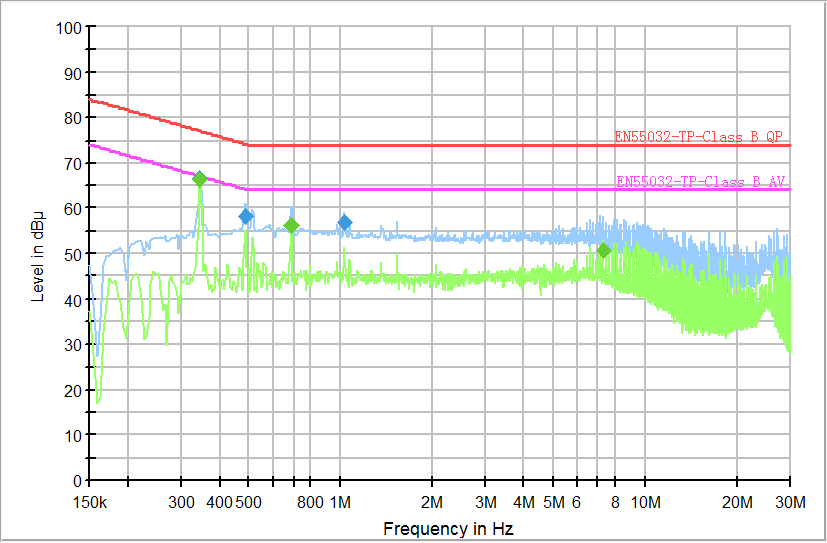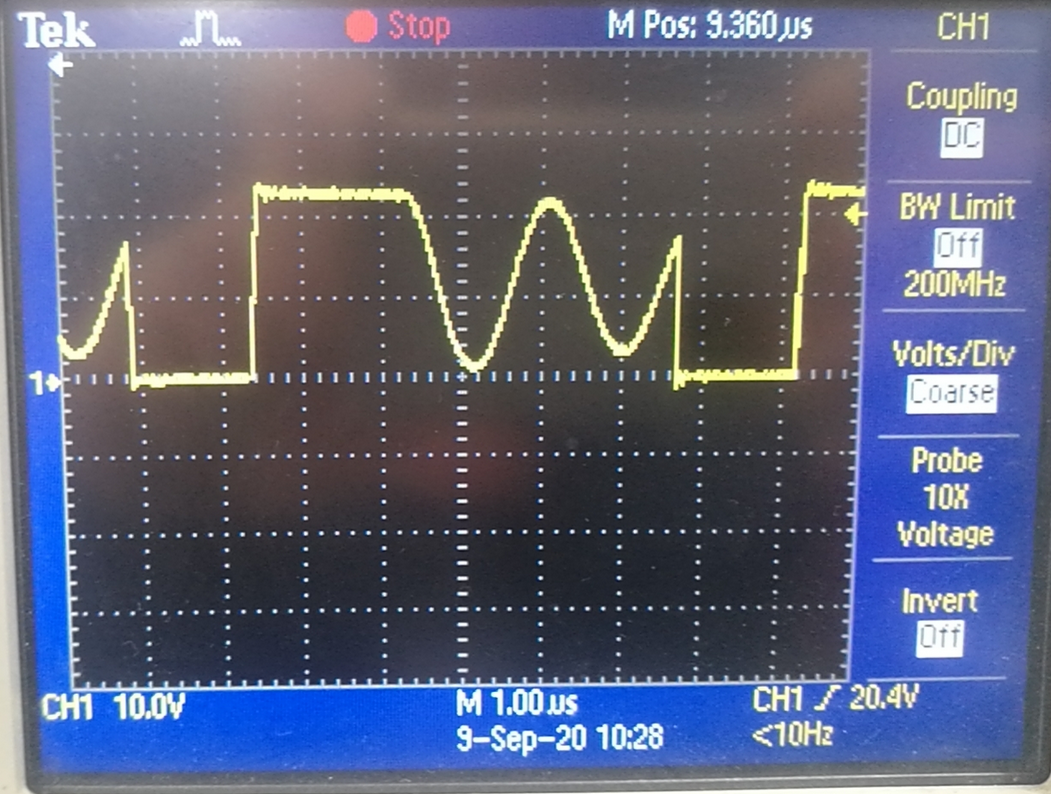This is a schematic drawing that fully refers to TI's reference design, TI's drawing number is PMP20588.Web link: www.ti.com.cn/.../PMP20588
The change is that the transformer is changed from PA6582-AL to 25SEFD-0901DJNL.
Here are the questions:
Now using TI's power supply scheme LM5022+TI's PSE controller scheme TPS23861 design of the 4-port PSE switch, CE (conduction) and Re (radiation) test results are as follows, among which CE exceeds the index more, we hope TI can provide relevant test data and improvement suggestions.The transformer is 25SEFD-0901DJNL(PN:YEL731R009).
CE: PSE power supply works, and PSE port has data, other network port CE curve
CE: PSE power supply works, but PSE port has no data when other ports have CE curves
RE


